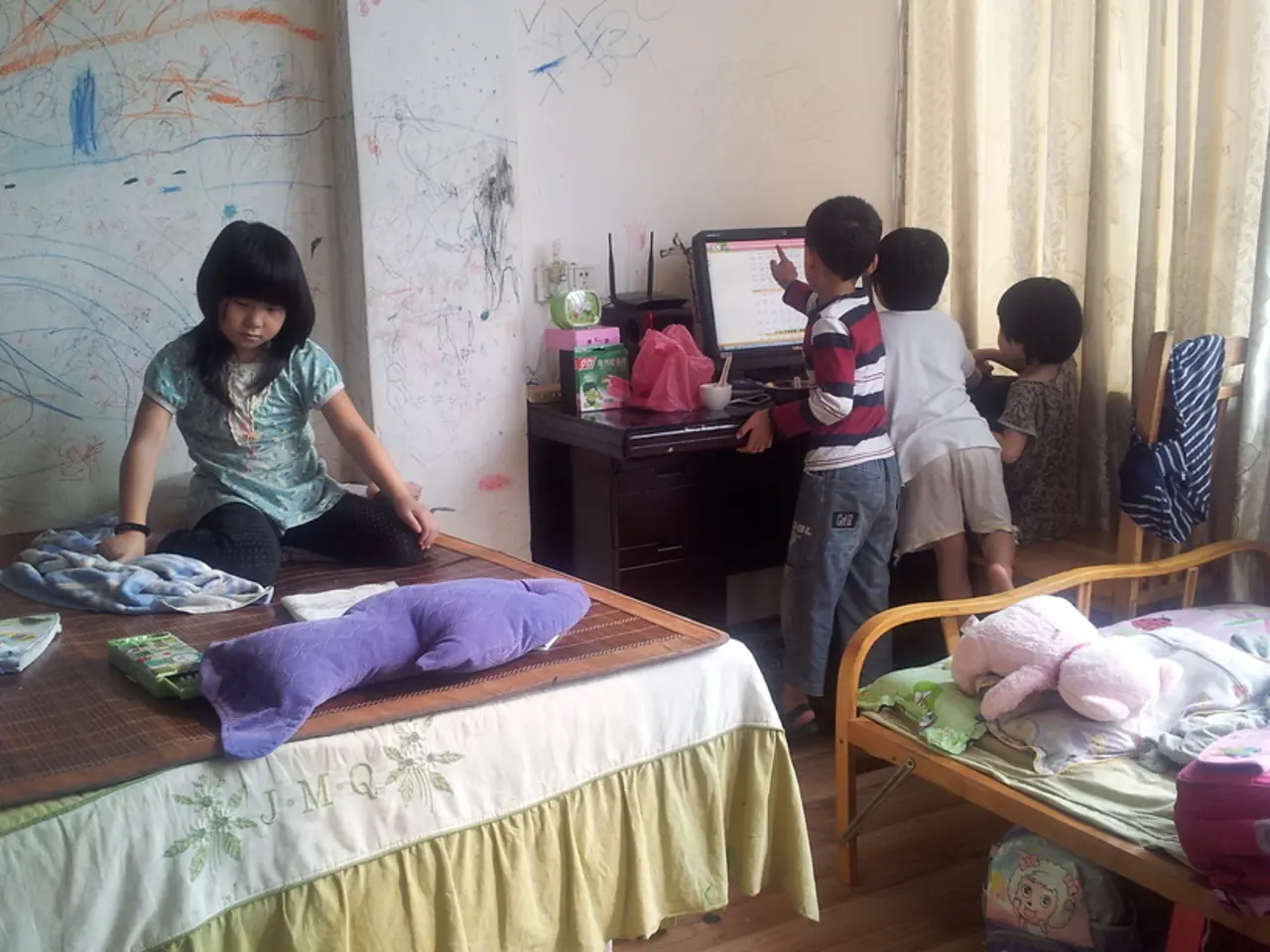Timeline of Bedtime Traditions for Children: Exploring Past Practices
In the realm of human history, bedtime rituals have evolved significantly, reflecting the cultural, social, and technological changes that have shaped our lives.
In the ancient world, bedtime was considered a protection ritual. Parents in ancient Egypt would say prayers and give their children amulets to ward off nightmares and bad spirits. Fast forward to Scandinavia today, and bedtime emphasizes hygge – a warm, cozy atmosphere, complete with blankets, soft lights, and family chill time. Babies sometimes even nap outside.
The Industrial Revolution brought about a seismic shift in family dynamics. With parents working long hours in factories, bedtime duties often fell to others. However, post-WWII life saw families moving to the suburbs, having larger houses, and children having their own rooms, which allowed for more personalized bedtime routines.
The introduction of television into homes brought competition to bedtime routines. Children started zoning out to cartoons instead of reading books. Yet, the 1950s and '60s saw an increase in popular picture books, such as those by Dr. Seuss, Maurice Sendak, and Margaret Wise Brown, which were fun and sleep-friendly. Some TV shows, like Mister Rogers' Neighborhood and Reading Rainbow, remained bedtime-friendly, while others were not.
The oldest preserved bedtime stories from oral tradition originate from ancient Mesopotamia. Over time, these stories evolved, with the Brothers Grimm taking old German folk stories and publishing them as books, popularizing fairy tales across Europe. In Greece, families told myths at night, while Romans added family prayers to their bedtime rituals.
Before books were common, stories were how people passed down wisdom, and bedtime was prime time for that. With the advent of better printing technology, books became more affordable, making stories accessible to more families. Goodnight Moon (1947) became a bedtime MVP due to its slow rhythm and soft tone, while Alice's Adventures in Wonderland (1865) introduced a new approach to bedtime stories, making them more silly, strange, and full of imagination.
Cultural exchange and globalization led to the adoption of breathing exercises, kids' yoga, and mindfulness routines in Western homes. In India, bedtime often involves traditional practices like warm oil massages, herbal teas, deep breathing, and storytelling from ancient epics. Across Indigenous cultures, bedtime connects deeply with nature and tradition, with practices like smudging rituals and Dreamtime stories.
Experts began warning parents about the negative effects of too much screen time before bed, as it could disrupt sleep and affect health. Modern bedtime routines are backed by research and have been shown to improve sleep, provide emotional comfort, boost grades, strengthen parent-child bonds, and reduce meltdowns. Dr. Benjamin Spock suggested flexible bedtime routines built around the child's needs, a shift from the old-school "because I said so" parenting style.
In Japan, families often co-sleep and end the day with soft lullabies called komoriuta, while sometimes engaging in forest bathing as bedtime prep. In many African cultures, bedtime involves storytelling by multiple family members around a fire or in the home, passing down life lessons, history, and culture.
Bedtime rituals have existed for thousands of years, with early humans already having basic bedtime habits. Today, these rituals continue to evolve, reflecting our changing world, but always with the aim of providing comfort, security, and a good night's sleep.
Read also:
- Peptide YY (PYY): Exploring its Role in Appetite Suppression, Intestinal Health, and Cognitive Links
- Toddler Health: Rotavirus Signs, Origins, and Potential Complications
- Digestive issues and heart discomfort: Root causes and associated health conditions
- House Infernos: Deadly Hazards Surpassing the Flames








